Special Exhibition Offers New Ways to Experience the Rich Histories of the Emily Dickinson Museum
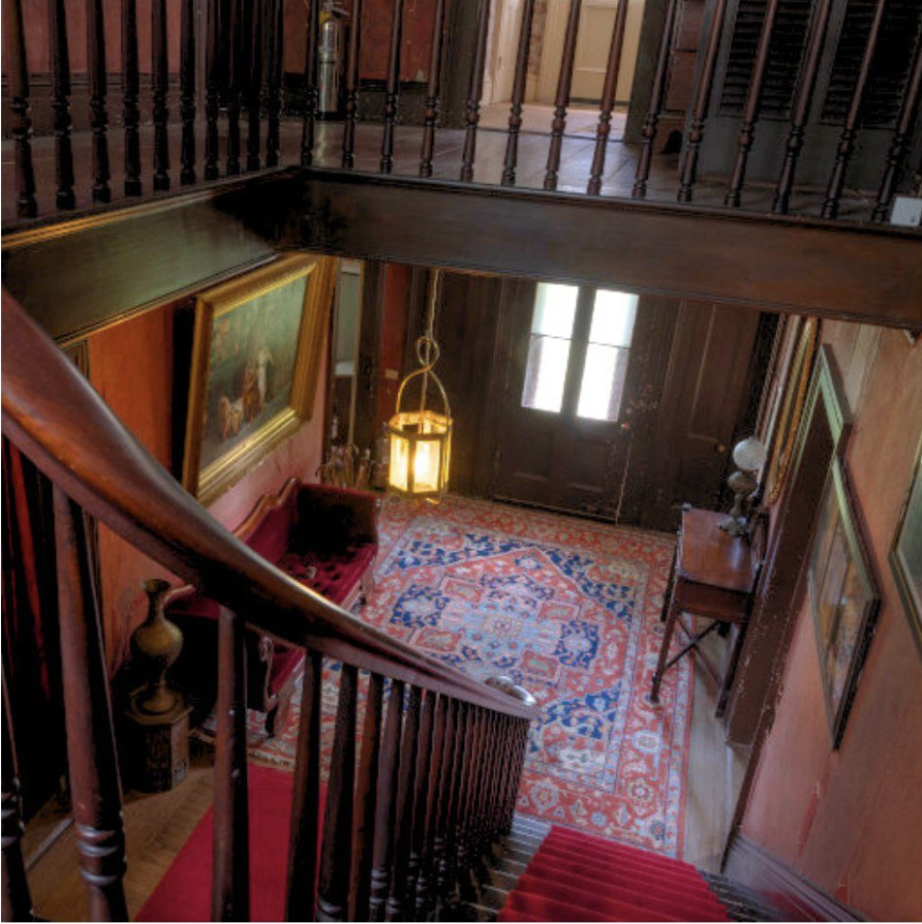
Entryway to The Evergreens, the historic home of Austin and Susan Dickinson. "“The Evergreens is an extraordinary house, unusually preserved, and steeped in the histories of the Dickinson family and the town of Amherst," said Jane Wald, executive director of the Dickinson Museum. Photo: Emily Dickinson Museum
I usually cover architecture and historic preservation topics for the Indy so I was pleased to wander into new (though related) territory to review “A Something Overtakes the Mind,” a special, temporary exhibit at the Emily Dickinson Museum. The show is on view through December 1, 2025, at a time of year when Amherst’s most well-known historic site seems to hum like a hive with all sorts of programs, events, and activities for the fall season. For the uninitiated reader, the Emily Dickinson Museum is a historic house museum consisting of two houses; the Dickinson Homestead and the Evergreens. The Homestead was the birthplace and home from 1855 to 1886 of 19th century American poet Emily Dickinson, whose poems were discovered in her bedroom after her death.
‘A Something Overtakes the Mind’ offers a different way to experience the museum and it is free like the museum’s grounds. I love the idea that an art exhibit is now housed in the Homestead where Emily lived for most of her life. It can be viewed as part of the tour (which requires a paid admission) or seen for free as long as you check in first at the new ticketing center inside the The Carriage House. The Carriage House, a reconstruction on the same foundation as the original building – sits between the Homestead and the Evergreens, the home of Emily’s brother Austin, and his wife, Susan Dickinson. In the Homestead’s back ell where the woodshed, laundry room and kitchen for the household once were, two contemporary artists have re-presented selected items from the museum’s collections (online since 2023) and have created lively re-interpretations of people, objects, and themes from Dickinson’s poetry as well. This is so appropriate as Emily Dickinson’s cousins Fanny and Lou witnessed Dickinson composing poetry “in the pantry….while she skimmed the milk.” Until the newly reconstructed Carriage House was finished, this dedicated space served patrons and visitors to the historic home (owned by Amherst College since 2003) where ticketing, a small museum shop, and restrooms had been located. Now that these functions and other activities have moved to the Carriage House, the area – temporarily at least – is a more meaningful space for all sorts of other things. The museum commissioned two artist/sculptors, Legia Bouton and Matt Donovan, to create a multimedia visual art and poetry installation. Bouton is currently Professor of Art Studio at Mount Holyoke College, while Donovan serves as the Director of The Boutelle-Day Poetry Center at Smith College. Don’t miss the evocative re-interpretation of the well in the kitchen that is part of the installation!
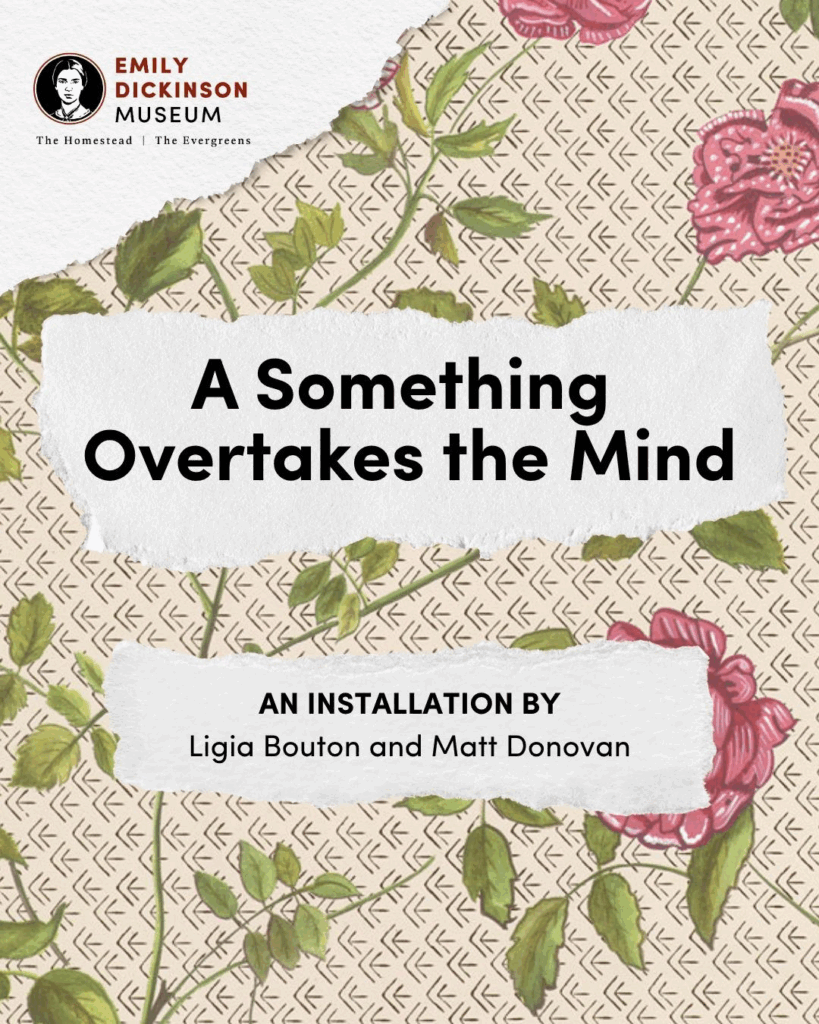
I was touched by the choice of items from the collections of the museum, particularly from Emily’s family, such as a display of treasured items found in the pocket of a tweed coat worn by the poet’s nephew, Thomas Gilbert (Gib) Dickinson. Here, preserved to the present day, were his handkerchief, a pencil, a button hook, a tiny red-orange metal figurine of an elephant and the seedpod of a buckeye.

During our multi-year Collections project, the museum discovered a number of items inside the pocket of a tweed coat belonging to the poet’s nephew, Thomas Gilbert (Gib) Dickinson. Courtesy of the Emily Dickinson Museum.
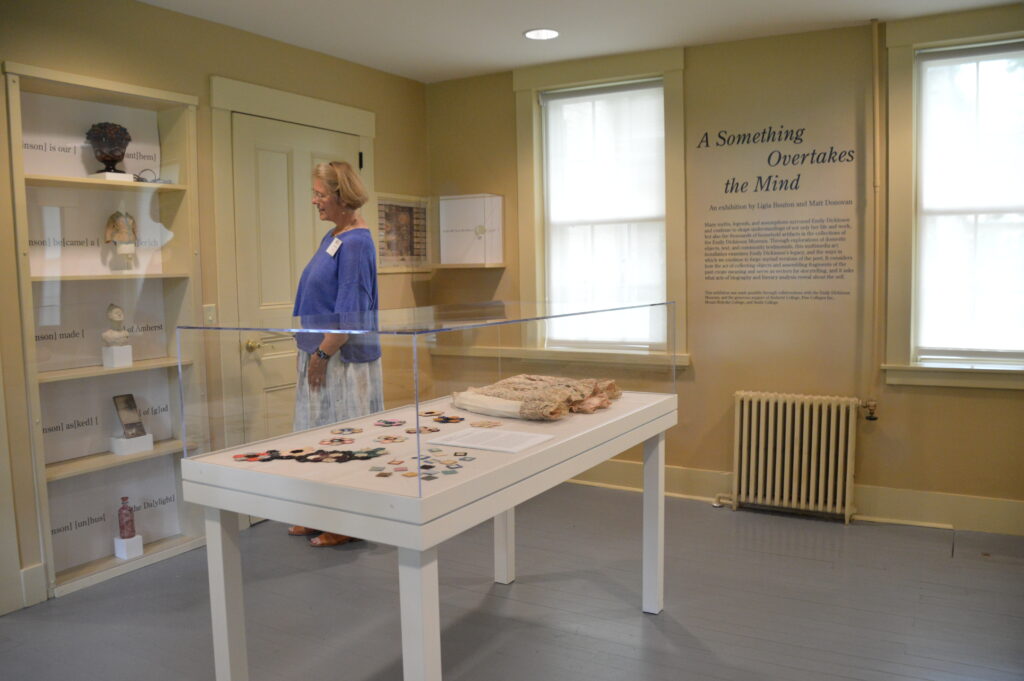

New Audio Tour
Another free and accessible museum program is a new audio tour of the grounds and gardens. This is also important because during her lifetime Emily Dickinson was known for her botanical knowledge and her interest in growing plants in a conservatory added to the Homestead. The audio tour leads from here down the hill under the shade of vast trees to see where the poet worked in her gardens. The tour references the newly restored small orchard of fruit trees by Triangle Street. By accessing this free tour via the museum’s website you can see how crucial the historic grounds were to Emily Dickinson’s life and poetry.
One of the other compelling things about the special exhibit is seeing tiny items from the museums’ collections gathered together to display ‘profiles’ of people from the Dickinson household or their family and friends. This is all that much more accessible since the museum collections of both the Homestead and the Evergreens, the Italianate villa that sits just west of the Homestead, have come online. This makes it more possible to see how items like Ned’s banjo, for example, would have featured in musical gatherings organized by his mother, Susan Dickinson, and father, Austin Dickinson, at The Evergreens.
Austin was Emily’s brother. Austin’s and his wife Susan Dickinson’s descendants are a very important part of the rich and compelling story that is the preservation of the Emily Dickinson site. The less well known prime mover here is Austin and Susan’s daughter Martha Dickinson Bianchi. She lived in the Evergreens after her parents had both died, without changing anything until her own death in 1943. So the preservation of this house, right next door to the Homestead, is a really critical element of the puzzle pieces of the larger story of the site. I learned recently that she, like Emily’s sister Lavinia, was also a poet. Bianchi corresponded in her time with the likes of Leo Tolstoy’s second cousin, Aleksey Konstantinovich Tolstoy. She translated his poetry and plays into English. The Evergreens is now also open to the public, offering a glimpse of preservation in progress, a project that began in 1999-2001 but is ongoing, taking many years to complete, according to Gregory Farmer, the consultant for the Evergreens from 2017.
I learned recently that the way home to Amherst for all things relating to Emily’s life and works is itself as interesting as the preservation of the material reality of the site. Relevant letters, objects, and photographs are discretely separate at places like Harvard’s Houghton Library or have been in private collections. The relative paucity of items in the Homestead from the era when the poet herself lived there has been carefully addressed—and righted along the way—by grants for restoration of the home and also creative donations of furniture–for example–from the Apple TV series Dickinson [see more here] that have allowed the site to be understood better. This September the annual Tell it Slant Poetry Festival will bring all things Emily to many new audiences across the world and the country.
And if you want to see the original white ‘dress’—actually something called a wrapper— you can now view it at the new, temporary exhibit space for the Amherst History Museum that just opened last month. The Amherst Historical Society’s new public programming space, known as the Amherst History Center, exhibits Eclipse Chasers which documents the travels of Mabel Loomis Todd and David Todd as they journeyed around the world to study and photograph solar eclipses. Mabel Loomis Todd was the first collector and editor of the works of Emily Dickinson. The Emily Dickinson Museum was one of the many things that drew me to live in Amherst and this fall, I realize that we are poised for a feast when it comes to her story and her many close associations with our town.

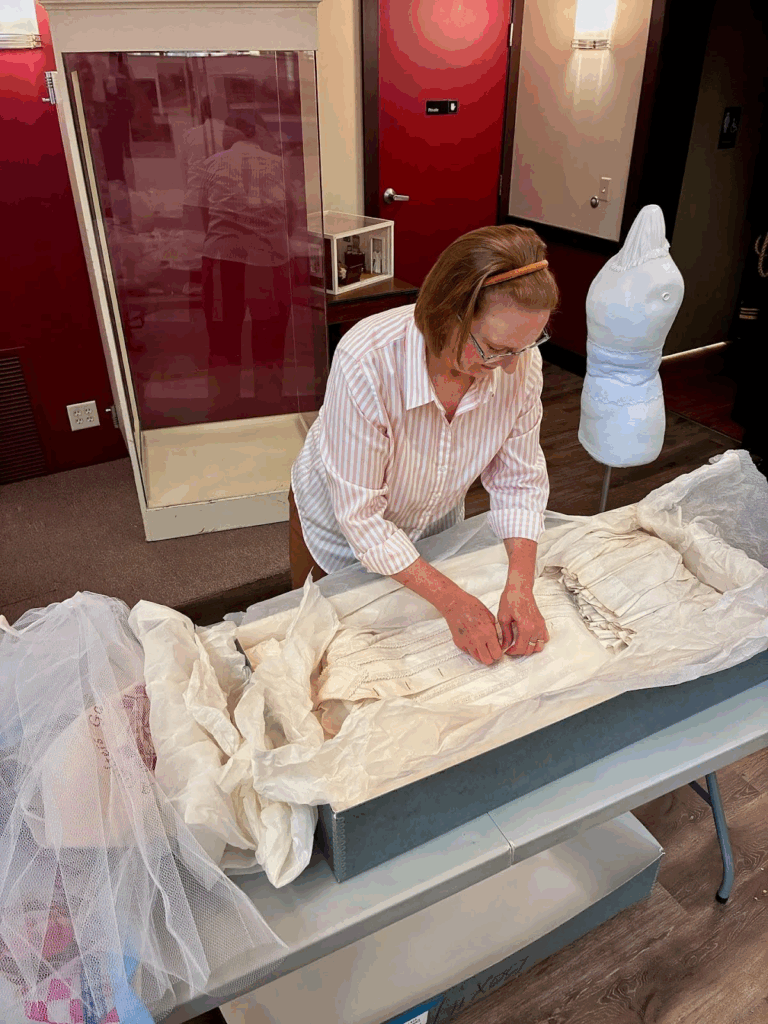
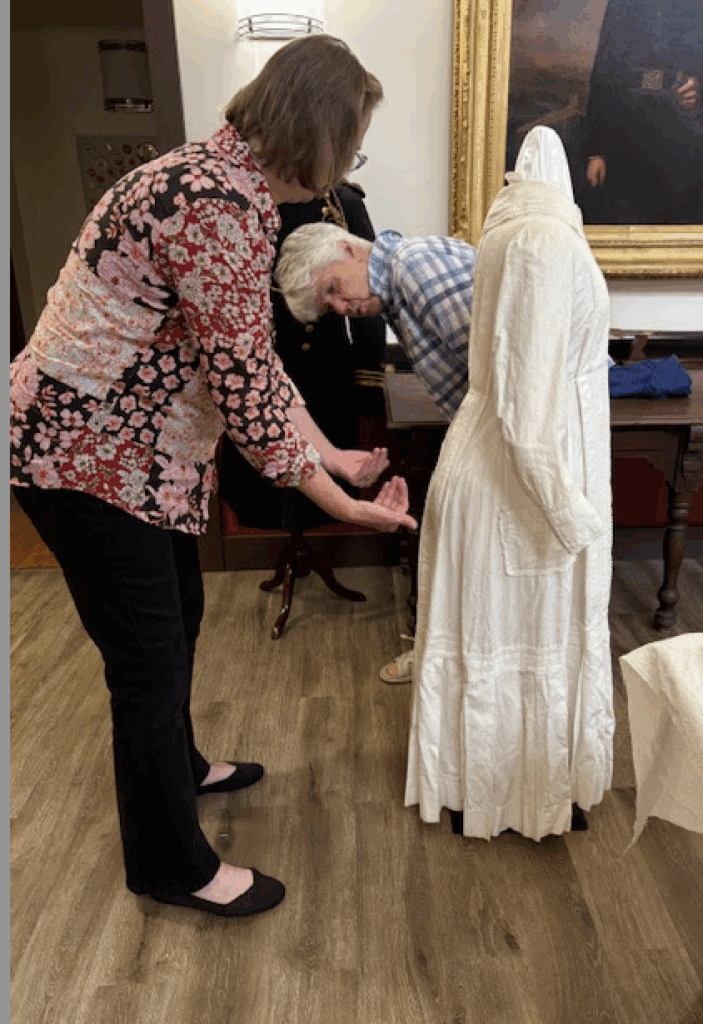
A Something Overtakes the Mind. Tuesday through Sunday, 10 a.m. to 5 p.m., Emily Dickinson Museum, 280 Main Street.
Tell it Slant is the annual poetry festival hosted by the museum and is held both in person and online, September 13-21, 2025
The Amherst History Center is open Saturday, 11:00 a.m.-3:00 p.m., at the Amherst History Center (45 Boltwood Walk in the former Knights of Columbus Hall).

A possible way to explore further the poems of Emily Dickinson and the objects (for example) in the collections of the Emily Dickinson Museum is to explore this thread from their website which features those of her poems that were sent with objects. https://www.emilydickinsonmuseum.org/a-trinket-to-confer-dickinsons-poems-sent-with-objects/